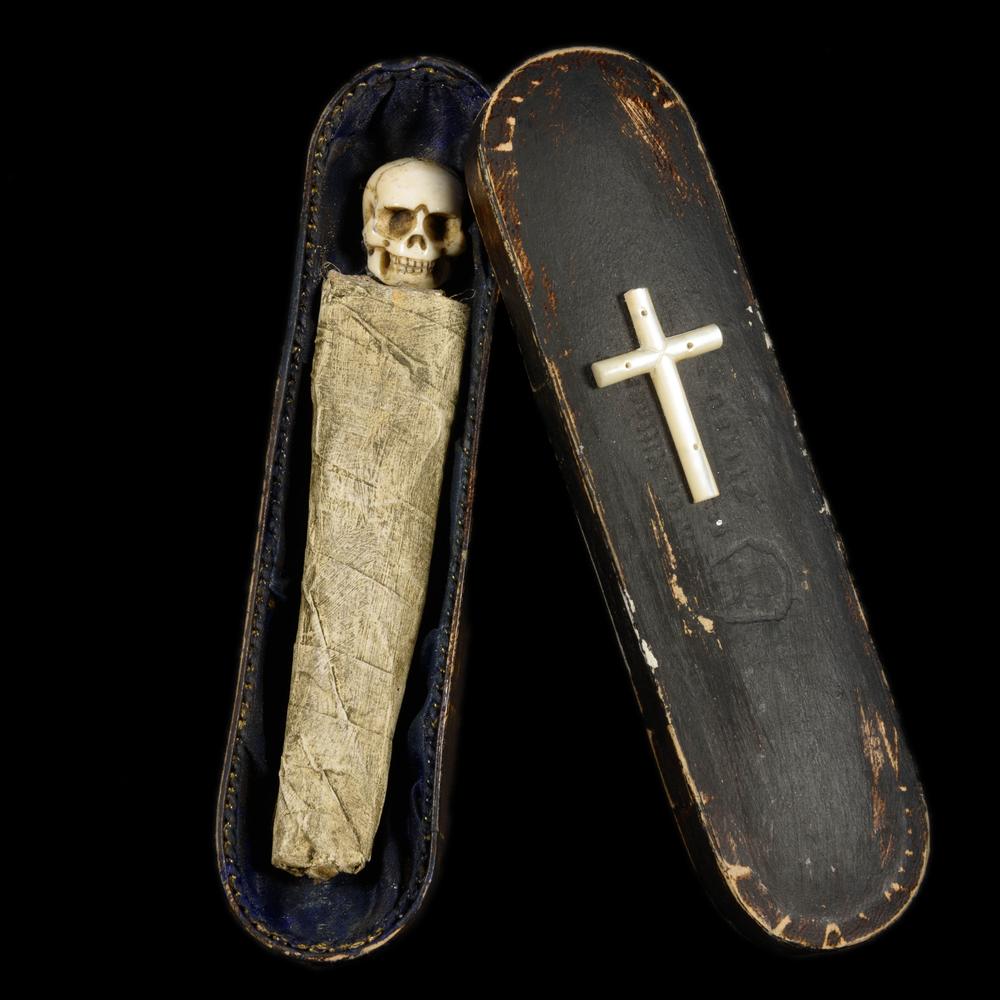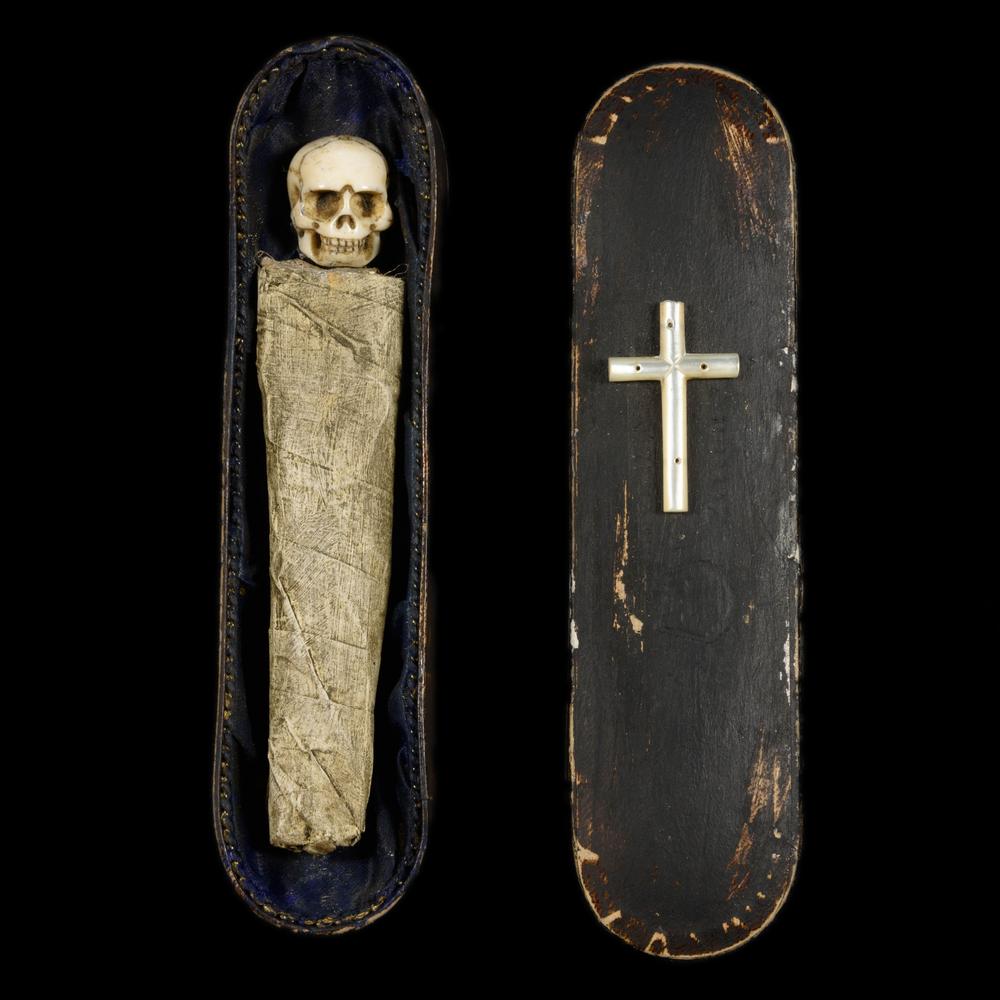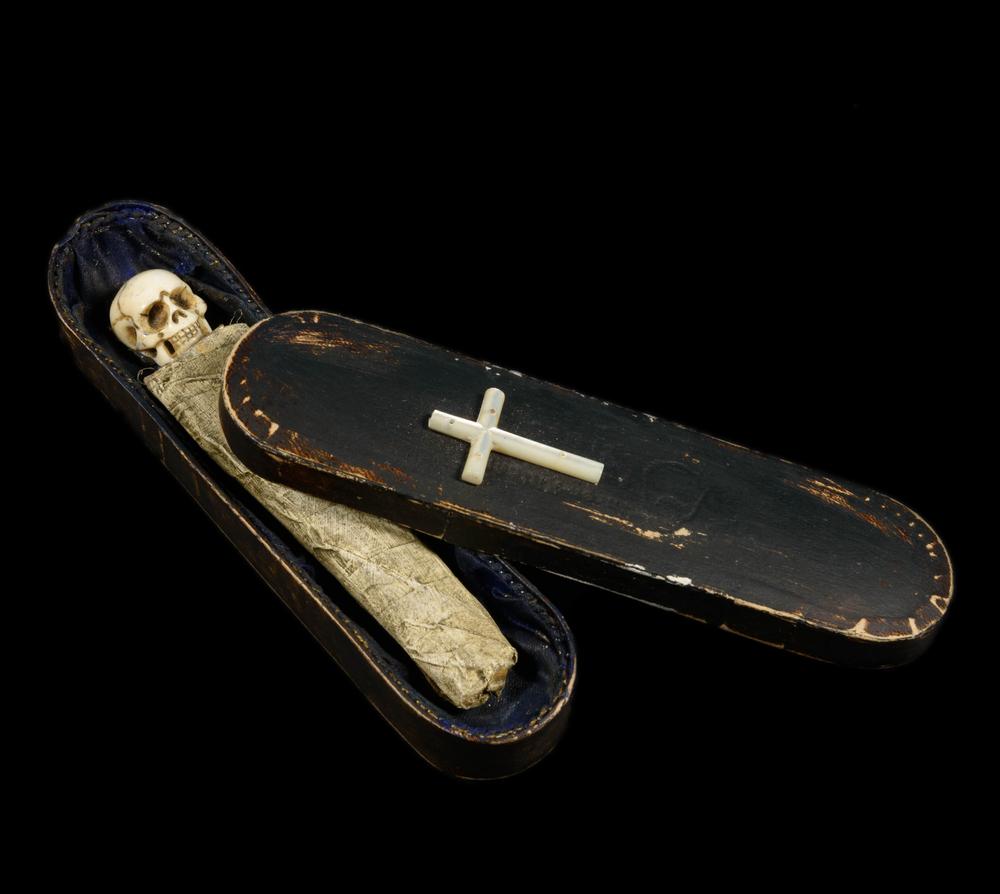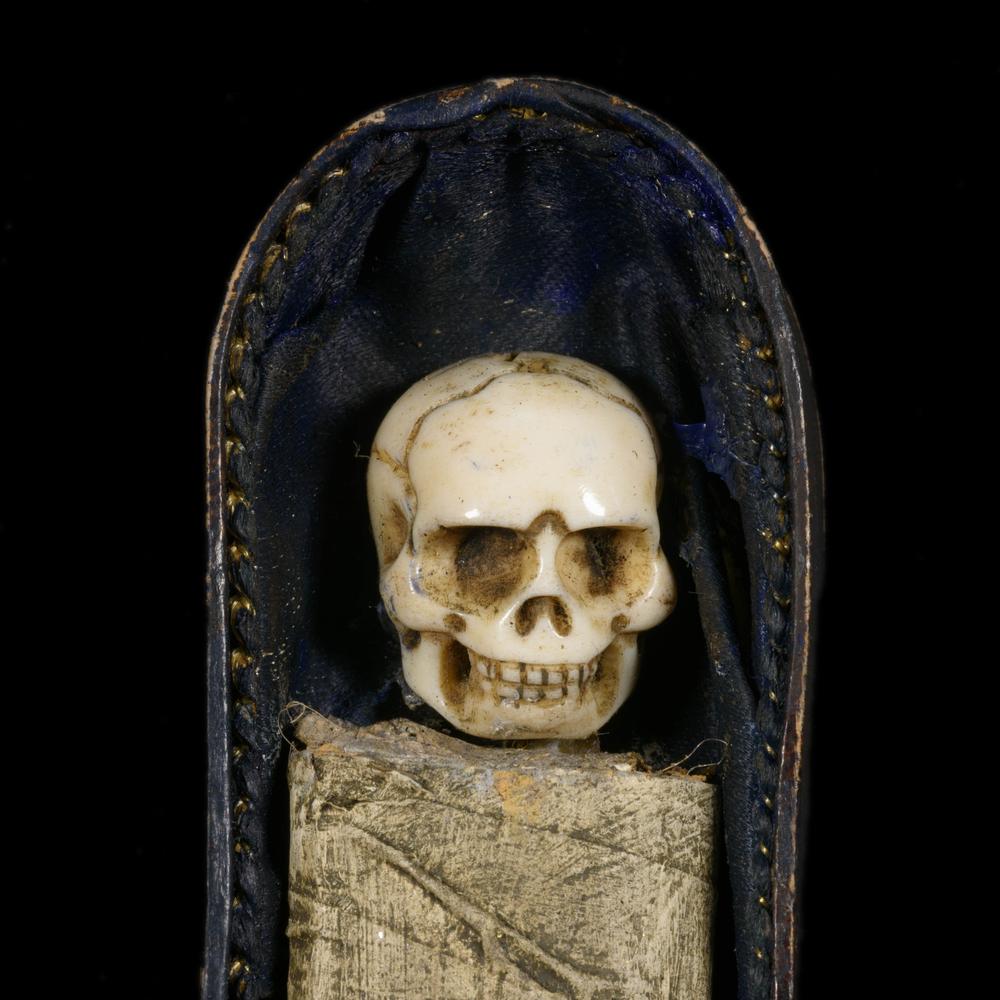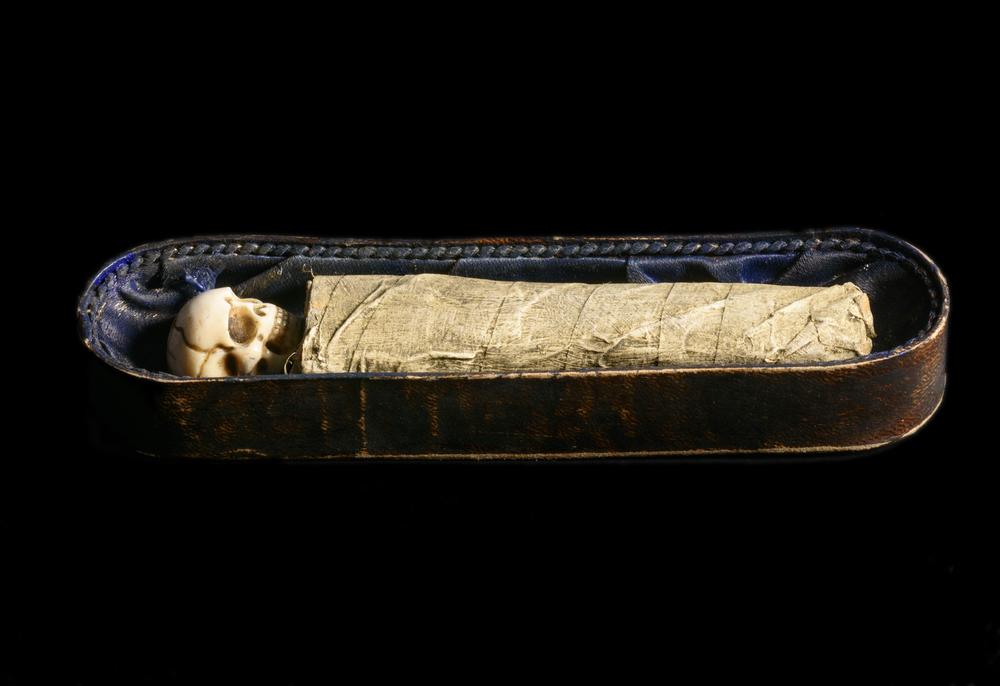TÖDLEIN MEMENTO MORI
TÖDLEIN MEMENTO MORI
Shipping calculated at checkout.
Our prices are in euros, the prices converted in dollars or other currencies can vary according to the rate.
Worldwide shipping
ref: #RK00-709Couldn't load pickup availability
Rare miniature funerary figurine known as a Tödlein, dating from the 19th century, originating from southern Germany, presented in its original blackened wooden case, elongated and oval in shape. The lid, simply adorned with a mother-of-pearl cross, evokes the spiritual function of this unique object.
Inside, the figurine rests on a padded midnight-blue fabric background, carefully crafted. The small body, wrapped in light-colored textile bandages, evokes a stylized funerary corpse. The head, finely carved from bone, represents a human skull, with hollowed-out eye sockets and visible teeth, reinforcing the meditative effect on death.
Rooted in the tradition of memento mori, this Tödlein was intended to accompany prayer and spiritual reflection, reminding the viewer of the vanity of earthly life and the certainty of death. Such objects, often kept in private devotional spaces or carried on journeys, were also appreciated by clergymen, mystics, and collectors.
A rare and precious piece, preserved in very good original condition. A moving and intimate work, at the crossroads of folk art, Christian faith, and funerary symbolism. An ideal object for a cabinet of curiosities, a sacred art collection, or a themed exhibition on death rituals and representations.
PERIOD: 19th century
DIMENSIONS: 15 cm
SIZE: 6"
Tödlein are small funerary figurines representing skeletons or mummified bodies, which appeared mainly in Europe between the 16th and 19th centuries. Emerging from the Christian tradition of memento mori, they served as reminders of the brevity of life and the inevitability of death. Often carved from bone, ivory, or wood, they could be worn as pendants, kept in cases, or displayed in places of prayer. The name "Tödlein" comes from the German word Tod (death) and literally means "little death." These objects combined art, spirituality, and macabre symbolism, while reflecting great craftsmanship. Used by religious figures, mystics, or scholars, they were also part of cabinets of curiosities. Through their silent expressiveness, Tödlein remind us of a time when death was an integral part of daily life. Today, they are highly sought after for their rarity and emotional depth.









